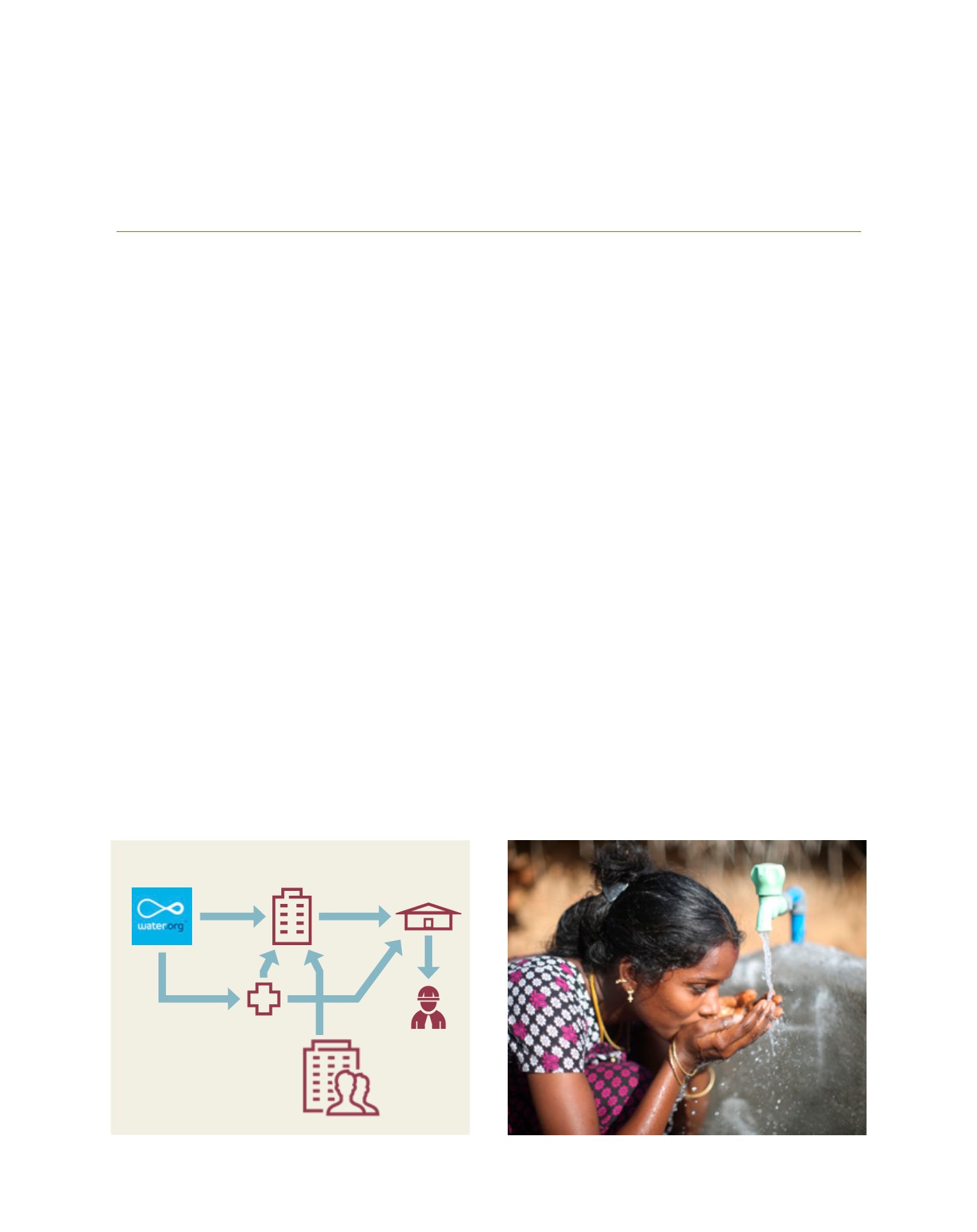

[
] 57
A B
et ter
W
or ld
Accelerating towards universal access to clean
water and sanitation – WaterCredit and beyond
Ann Marie Castleman, Heather Arney, Sambhu Rathi and Zehra Shabbir, Water.org
A
ddressing the world’s water and sanitation needs is
one of the great human development challenges of
our time. While we have known how to deliver safe
water and sanitation (WSS) for more than 100 years, today
there are still more than 2.3 billion people that lack access
to basic sanitation services
1
.
It is well understood that safe drinking water and hygienic
toilets protect people from disease, enable societies to be
productive, and are fundamental to the well-being and safety
of a household. WSS advocates argue that progress on the
Sustainable Development Goal 6 (SDG 6) – universal and
equitable access to safe and affordable drinking water and
sanitation for all – is a requirement to achieve other SDG
goals, including elimination of poverty and gender equality.
The sums of money needed to achieve SDG 6 are undoubt-
edly large, and reliance on government and donor financing
alone limit the pace at which the required investments can be
made. The latest World Bank estimates indicate that achiev-
ing universal access to safely managed water and sanitation
would cost approximately US$114 billion per year for capital
expenditure – an amount that is three times the current
investment levels
2
.
These realities have inspired Water.org to think of system
change, particularly through finance that is as close to the poor
as possible. Through its WaterCredit approach (see Figure 1),
Water.org works with microfinance providers to create, pilot,
and scale affordable WSS financing solutions for the poor. In
the case of early adopters, Water.org also provided a grant
while the case for WSS lending was being built in the region.
This grant helped partners build their technical capacity.
These partners then leverage funding from banks and capital
markets to disburse loans to their clients, who in turn use the
financed amount to build their own WSS improvement.
The upfront cost of a toilet or a piped water connection can
easily equal a household’s entire monthly income, but many
are willing to purchase one if they can spread the cost over
time. The recycling of affordable WSS capital to the base of
the pyramid can help achieve the ambitious goal of SDG 6 by
making capital affordable for the poor.
WaterCredit: reach and impact
3
WaterCredit-led WSS lending has effectively leveraged
funding for great impact and has helped to meet ambitious
national and global targets, including SDG 6. WaterCredit
interventions have disbursed more than 1.6 million loans
for WSS improvements, totalling over US$463 million and
have positively impacted more than 7.1 million people. The
cost per person to deliver water and sanitation solutions has
continued to drop with an increase in loan disbursement
over time, indicating increasing efficiency of WaterCredit
programs (Figure 2).
The success of WaterCredit has demonstrated that the
poor are viable customers who are willing to take up loans
Image: Water.org
Source: Water.org
Fig 1: WaterCredit model
Microfinance
providers
Banks and
capital markets
WASH NGOs
Households
Contractors
















